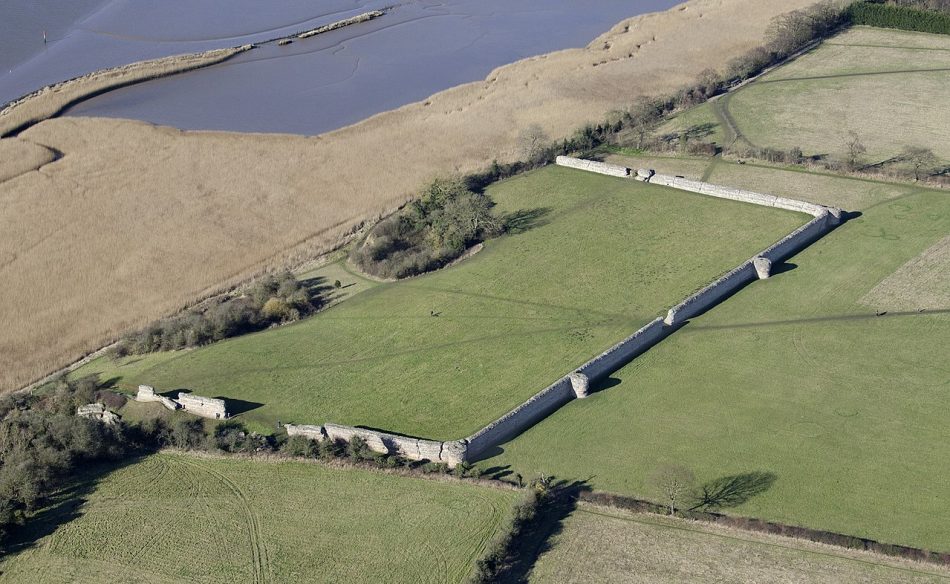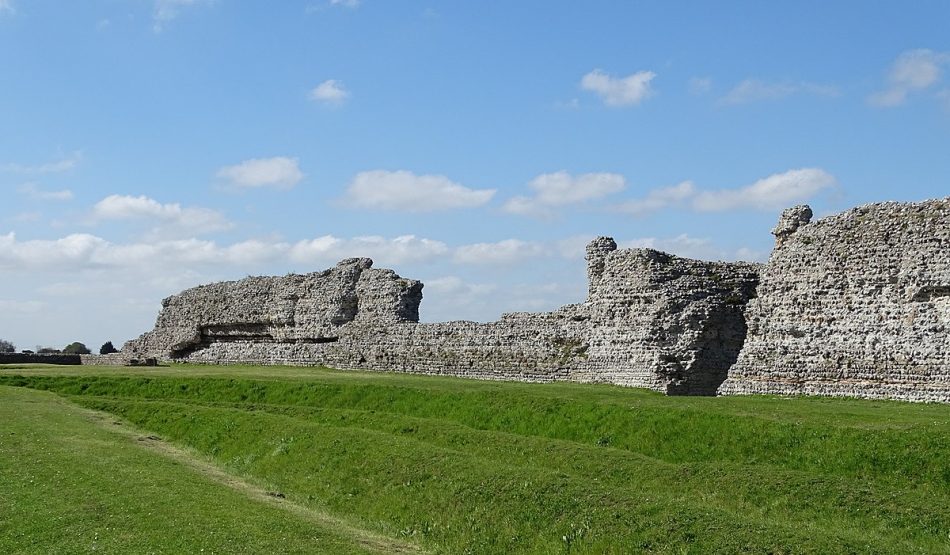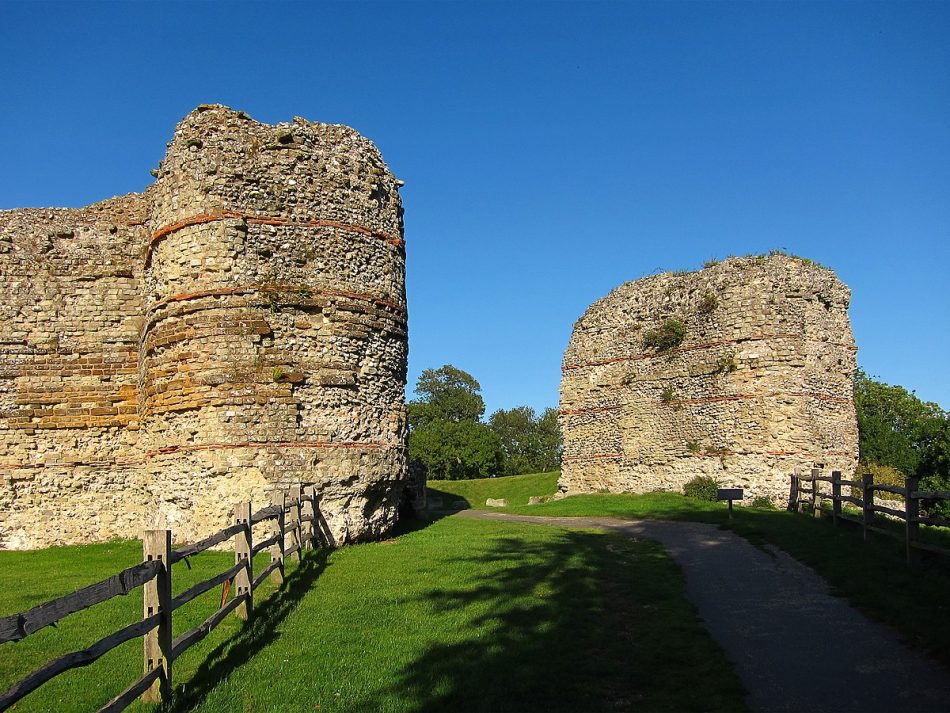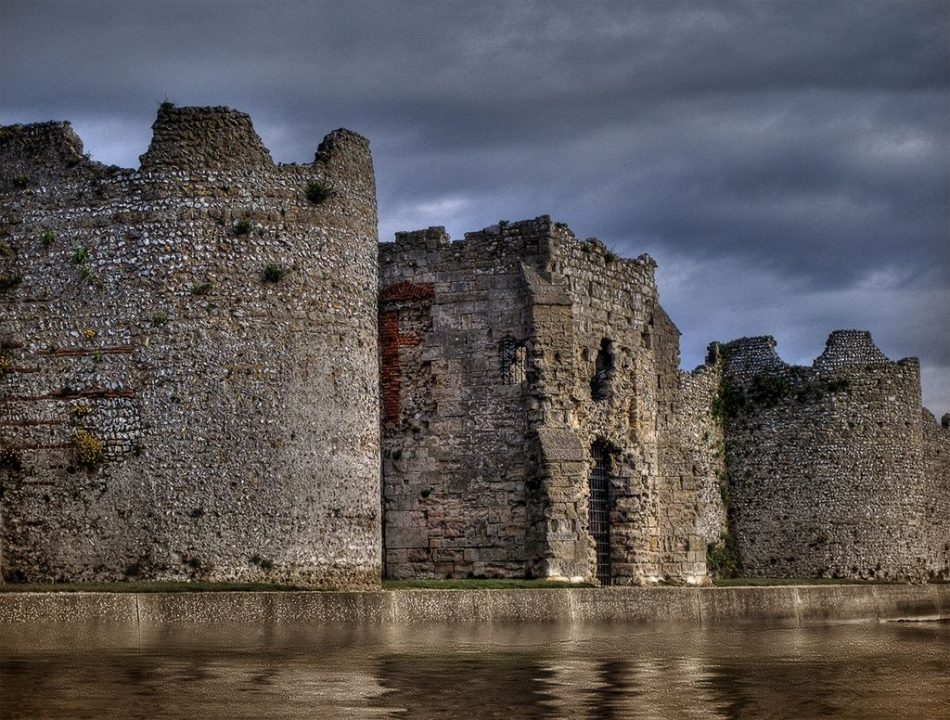The Saxon Shore forts of Britain - ‘Walking’ the Saxon Shore Way
Litus Saxonicum
The Saxon Shore forts in Britain are a series of forts originally built in the third century AD (although some were built atop earlier structures and most were renovated at various times). In the fourth century, perhaps earlier, these forts were combined into a military command which controlled forts on both sides of the English Channel, known as The Saxon Shore (the litus Saxonicum). In the late fourth century, we come across the Comes Litoris Saxonici per Britanniam or “Count of the Saxon Shore”, a command named in the Notitia Dignitatum. The idea of a “Saxon Shore” is, itself, rather peculiar for that area of Gaul and Britannia. An idea probably suggested by raids undertaken by Saxon pirates, requiring forts to protect the coast. Eutropius (Breviarium 9.21) tells us of Saxon raids in the 280s. Some modern scholars have rejected this interpretation, however, arguing instead that the name reflects Saxon settlement of the coastline. Others have argued that the forts had a different purpose, protecting trade and supply routes up (or down) important navigable rivers and, certainly, the forts were originally located close to the mouths of major rivers or they controlled the estuaries of several rivers. The function of the forts may even have changed over time and by the late fourth century, they were combined into a military command to deal with Saxon raids.

Finding forts
Some of the locations of the forts are controversial but are most commonly identified as: Brandonum (Brancaster, Norfolk), Gariannonum (either Caister-on-Sea Burgh Castle (Norfolk) or, perhaps both sites), Othona (Bradwell-on-Sea, Essex). A Roman fort at Walton-on-Sea in Essex stood between Gariannonum and Othona but is not named as a Saxon Shore fort – it is possible that the site named as Othona (and Gariannonum) incorporated two forts. The next fort was Regulbium (Reculver, Kent) then, moving around the coast, Rutupiae (Richborough, Kent), Dubris (Dover, Kent), Portus Lemanis (Lympne, Kent), Anderitum (Pevensey, East Sussex), and Portus Arduni (Portchester Castle, Hampshire). Other locations are sometimes included in the Saxon Shore but these are controversial and not mentioned in our major sources. In addition to the Notitia Dignitatum we can use the Ravenna Cosmography, a list of place names from around the Roman world published in c.700. We find very clearly the names of several Saxon Shore Forts in the Cosmography. We can also use Ptolemy’s Geography, the Antonine Itinerary and the Peutinger Table (or Tabula Peutingeriana), a thirteenth-century map, which may have copied a Roman original (now in the Österreichische Nationalbibliothek (Austrian National Library) in Vienna).

The north wall of Richborough - photo Ad Meskens
Straying out of time
My fiancé and I only got to seven of the nine forts. We were working just out of London and used each weekend to drive to a new location. We visited the forts in the order of Portus Arduni (Portchester Castle), Anderitum (Pevensey Castle), Portus Lemanis (Lympne), Dubris (Dover), Rutupiae (Richborough), Regulbium (Reculver), and Othona (Bradwell-on-Sea). Of course, places like Portchester, Pevensey (which we visited in thick fog), and Dover took much longer to visit than some of the others, since there was so much more to see and do in those locations (I couldn't 'only' do Roman sites in my touristing!) . The trip was therefore completed piecemeal over several weekends (and there were other trips in between). For instance, the route to Othona at Bradwell-on-Sea takes you past Maldon in Essex and, just outside of the town, is the site of my favourite battle. Apologies (booh, hiss!) it is not an ancient one, but one unsurprisingly called the Battle of Maldon, fought in 991 AD against an invading force of Vikings and on which I’ve written many times, including in Medieval Warfare 2.1. I excitedly pranced about the battlefield and recited Old-English poetry to my fiancé (from the epic poem of the battle which survives). Even that was not enough to put her off (mind you, at Culloden, I single-handedly re-enacted the Highlander’s charge (she was the line of British) – but that was the first night of our honeymoon so it was too late for her by then!). Needless to say, we almost didn’t make it to Othona at all! On one visit, to Richborough, my mother and step-father joined us which was lovely as I got to geek-out in an actual Roman fort and show off my knowledge to my mum (having studied ancient history in New Zealand for eight years in the 90s, there were very few opportunities for me to do that! And mum often questioned why it was I was studying Greek and Roman warfare in New Zealand).

The fog was so thick when we visited Pevensey that we could not find the fort. We did find a phone booth (this ages me of course), and so-called the site, the manager of which told us incredulously that we could not possibly miss it. Eventually, when we got close, the impressive walls loomed out of the fog and, by the time we’d finished our visit, the fog had cleared and the walls were indeed visible for miles around the site! The final two forts are missing from the list I visited with my (soon to be) wife. They were Gariannonum (Burgh Castle) and Brandonum (Brancaster). I did visit them too, and they are still connected to my wife and family, however. In the week before our wedding (at Harrogate, followed by a reception at Fountains Abbey in North Yorkshire), we were staying with my future in-laws at St Ives in Cambridgeshire. Apparently, my future Father-in-law and I were more of a hindrance than a help in last minute preparations for the wedding, and so we were ordered from the house to go on a jaunt. Where better than to head onto the Norfolk Broads and on to the final two forts of Burgh Castle (Gariannonum) and Brancaster (Branodunum). We also went to Caister-on-Sea for good measure. As a "boys' day out" we decided to navigate our way without the use of maps (this was before the days of google maps but, with the aid of the welcome, brown, English Heritage road signs, we managed to do so with a minimum of wrong turns). That was also the time of the Foot and Mouth outbreak in 2001 so we could only get so close to the sites, even after we had walked our shoes through disinfectant. The sites themselves were closed, but many photos were taken. Needless to say, the forts of the Saxon Shore are an important part of my own history. So much so that I did track down an original hardback copy of Alfred Church’s 1887 novel Count of the Saxon Shore (and I found it a much easier to read than Lew Wallace’s much more famous Ben Hur from 1880).

Family stories
Now, even in our family today, my wife likes to tell the stories of how I took her to disappointing Roman ruins around Britain (“only sometimes!” I interject – and some of those stories are a different blog entirely). We got married on Midsummer’s Day 2001 (June 22nd) and, after a lightning-fast tour of Scotland, we continued our honeymoon in Greece and Italy and so took in many more ancient ruins. My wife then complained that I could have taken her to those, much more impressive remains, all along and not to “disappointing bits of rock in damp British fields”. Hmmpf. I did not, for instance, ask her to accompany me on a tour of the basements of London where parts of the original Roman wall survive to this day (often the then-current tenants were unaware that that “old wall” in the basement was anything so important). With only a few exceptions, however, the remains of the Saxon Shore forts are indeed impressive and a testament to the defences of the province of Britannia in the last centuries of the Roman Empire. Whether you walk it or drive to them, a visit to the Saxon Shore forts is well worth your time.
